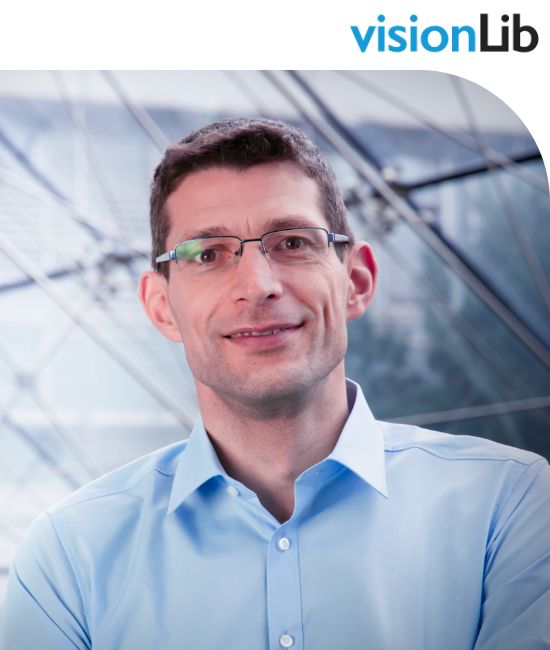10:30 AM - 10:55 AM
Description
When AR and VR are used to train people in advance or assist them on the fly, users are typically given information about the current task step (cues), either immediately before or while doing it. Many tasks, in the real world and in AR and VR, also use precues about what to do after the current step. We have been exploring how precueing multiple steps in advance in AR and VR can influence performance, for better or for worse. Our work addresses tasks ranging from simple path following to manipulating physical and virtual objects with one or both hands. I will present some of our results on the effectiveness of different numbers and types of precues, and explain their implications for task training and guidance.
Speakers

10:30 AM - 10:55 AM
Description
Stellantis and have been creating new VR training programs to transform the effectiveness of their workers in concert with the UAW.
Virtual Reality training is perfectly suited to the complex Stellantis manufacturing environment. One of the main aims of their training is to reduce to zero the danger of personal accidents and expensive mistakes. VR allows for highly realistic simulation training, that is deeply engaging for learners.
The goals of the VR training program are:
• Improve training outcomes for workers
• Improve safety, quality and proficiency of workers
• Ultimately they want to use AR / VR to improve production outcomes
• drive proficiency, efficiency and quality
• create real time manufacturing aids
Umajin have created a powerful VR / AR Authoring platform, that significantly reduces the cost of content creation. It provides:
• 3D content pipeline to make it easy to bring in existing assets. With the NVIDIA Omniverse tools the 3D models can be imported from the live manufacturing data from the Siemens CAD systems.
• It allows for multi participant scenarios
• Accurate tracking of people, tools and props within the VR environment
• LMS integration
• After action review
Speakers

10:30 AM - 10:55 AM
Description
Back in 2020, Automata’s business changed overnight. For this robotics company, medical laboratories and testing facilities were calling non-stop looking to automate COVID-19 tests.
In this talk, Maxim Cooper, Team Lead and Pre Sales Application Engineer at Automata, will share how they navigated this tumultuous period and turned to augmented reality technology as a solution. He’ll discuss how they were able to make their team more efficient and effective, and share his plans for extending this to a showroom of the future.
Maxim will be joined by Zac Duff, Co-Founder and CEO of JigSpace, who will share a behind the scenes look at how this was possible, and the actions other companies can take to drastically reduce their sales cycle from 6 months to 6 weeks.
You’ll come away with practical examples of how companies can unlock real value by harnessing augmented reality to transform how they sell and support their customers, and be inspired by a company’s story of transformation.
Speakers


10:40 AM - 11:05 AM
Description
The DPT pixel is a single microLED emitter whose emission wavelength can be tuned all the way from red to blue and beyond, including white light. This removes the need for ‘RGB’ sub-pixels made from different material systems, and no further colour conversion/filtering or complex stacking architectures are required. DPT enables colour uniformity, eliminates complex fabrication processes, simplifies system design to deliver high-performance microLED displays and optical solutions, offers the most advanced approach to full-colour microLED displays, and brings these advantages to the whole display industry.
Speakers

11:00 AM - 11:25 AM
Description
Theft, hacks, and phishing scams have been an issue since Web2 first existed. The problem is exacerbated in Web3 because there are so many additional vulnerabilities with smart contracts and digital wallets. The main difference between Web3 and Web2 personal security? In Web3, it only takes a single click to lose everything you own.
As businesses from gaming and entertainment industries to enterprise and DeFi platforms actively explore Web3 payment processes and currency options, the question becomes – who is responsible for protecting the user’s assets? Is it the individual or the brand? Spoiler Alert: both are. Individuals need to be savvy about the risks and businesses and brands should innovate responsibility, making built-in security frameworks a priority. Brittany Mier y Teran, Head of Business Development for Harpie, hopes to bridge the gap, sharing best practices and strategies for how brands and individuals can make safer decisions while trading, gaming, and interacting in the digital age. This talk will discuss the most common risk factors for personal asset security in Web3 – from social engineering and payload app scams to website hijacking and phishing to simple human error and social media misinformation.
Speakers

11:00 AM - 11:25 AM
Description
Luisa Paes from ARVORE Immersive Experiences brings an overall look on how the studio works narrative in their award-winning XR projects. We'll have an ample look on where to start and what to know about the segment, including practical solutions brought in their games Yuki (both VR and MR) and Pixel Ripped. If you want to know more about the link between narrative design and XR, look no further!
Speakers

11:00 AM - 11:30 AM
Description
On their own, text-based LLM interfaces like ChatGPT can’t deliver exchanges that are akin to one person chatting with another person in the real world. They lack a face, a personality, and a physical presence with which to connect. But very soon, we won’t just be interacting with LLMs through a text prompt.The AIs that we will chat with will have a physical form. Will that form be built of real-world holograms or physical robots? Just as iPhones were the “container” for the mobile revolution, the race between holograms and emotional robots as the “containers” for the conversational AI revolution is heating up. This talk will touch on the early commercial examples of each.
Speakers

11:00 AM - 11:35 AM
Description
Join the "Grandfather of Virtual Reality" and Virtual World Society founder Tom Furness + China President at HTC and VWS board member Alvin Graylin as we discuss the next stage of the XR industry's growth. Sharing their thoughts on the views and learnings from key industry leaders of the VWS' "XR Round Table", find out where Tom's untethered optimism and Alvin's seasoned global business experience intersect.
Moderated by Linda Ricci, this promises to be a lively and action-provoking session featuring leading thinkers in the space.
Speakers




11:00 AM - 01:00 PM
Description
Outlets located throughout the Convention Center & Hyatt. Food available for purchase.
11:05 AM - 12:00 PM
Description
Join us for a thought-provoking discussion on the importance of building experiences to support, engage and enable the inclusion of all people. This diverse panel of expert stakeholders will delve into the challenges and opportunities of creating inclusive and accessible XR technology for all focusing on enterprise environments. With insights and best practices, this panel will share solutions, use cases and advances where XR has enabled and served communities, and will provide a glimpse into the future of accessibility.
Speakers





11:10 AM - 11:35 AM
Description
The term “metaverse” has become the latest corporate buzzword, but how will virtual reality truly integrate into our professional lives?
To answer this question, think back to the late 90s: commercial internet access shrunk the world and established a new playing field for companies to facilitate team interaction, marketing, and product distribution.
Today, executives have a similar opportunity to transform their business’ operations and engage with customers in an immersive environment via the metaverse.
Opening up endless possibilities for communication, collaboration, morale and workplace culture, VR enables coworkers to catch up, watch a presentation, and brainstorm in an array of immersive settings without ever leaving home.
Join Andrew Hawken, CEO and Co-Founder of Mesmerise, and Leslie Marshall, Chief Marketing Officer at Mesmerise, as they discuss how companies can embrace VR for enhanced hybrid work environments. They'll also address the practicality of the medium and current tech limitations.
Speakers


11:10 AM - 11:35 AM
Description
The Gateway to the Future is an AR project that aims to "enrich cultural heritage through the power of technology". It consists of two AR experiences centered around the Wasserschloss - an iconic UNESCO World Heritage Site located in Hamburg. HONOR partnered with ARLOOPA to bring the concept to life and tasked two visual artists - Yunuene and Timo Helgert, to creatively transform the Wasserschloss using AR.
Yunuene's "Sailing Through Time" project takes viewers on a journey through the port city of Hamburg's marine logistics history.
You can enjoy both experiences for free using the ARLOOPA app. Users lucky enough to be in Hamburg can use AR from the Poggenmühlen-Brücke bridge on the side of the Wasserschloss landmark as a vantage point. Everybody else can just use a flat surface to project the entire visual ensemble on a flat surface.
We can see how the metaverse is colliding with physical reality.
Speakers


11:10 AM - 11:35 AM
Description
Join us for a presentation of a new metaverse social platform where people can gather, communicate, and express themselves digitally.
Speakers


11:30 AM - 11:55 AM
Description
Immersive technology is rapidly evolving, and AR/VR developers must collectively update our design standards. When innovative XR developers create new interactive functionality, those features become adopted across the industry as XR Design Standards. As technology for hand-tracking improves, we will continue to see an evolution of gesture controls and tools.
This session will offer a deep-dive into some of the best interactive features found in XR games and utility experiences. From the "lasso grab" feature in Half Life: Alyx, to the amazing suite of gesture controls in Hand Physics Lab, we will explore best practices for building and maintaining modular tools for designing interactive XR experiences.
Speakers

11:35 AM - 12:30 PM
Description
Coming Soon!
Speakers





11:40 AM - 12:05 AM
Description
When is something remotely similar to a 'metaverse' going to actually happen, and when it does, what needs to happen to make it a positive experience for humans and maybe other sentient beings too. Philip looks back on 20 years of Second Life to talk about what is likely to happen next.
Speakers

11:40 AM - 12:05 PM
Description
The advent of advanced technology and machinery has put workers in a variety of industries at risk of unemployment. In order to solve this problem, we will explain a human assist-based XR solution that helps overcome physical limitations (memory, cognition, vision, etc.) as a human being and coexist with technology, focusing on cases. And I will suggest the direction that XR technology should go forward.
Speakers
11:40 AM - 12:25 PM
Description
Drawing on a rich institutional history of teaching, scholarship, and innovation, students and faculty of Shenandoah University are recreating the drama of the Constitutional Convention in an experiential learning opportunity for inclusive audiences. The Shenandoah Center for Immersive Learning (SCiL) collaborates with constitutional scholars and teachers to develop a multi-component, immersive experience in the debates at the Constitutional Convention of 1787.
This reconstruction in virtual reality focuses on the debate over how to elect the chief executive, or president. Employing 3D scanning and motion capture technologies, and in collaboration with the National Parks Services and the National Constitution Center, this work resulted with a high fidelity recreation of Independence Hall's assembly room and avatars of the founders. The experience itself immerses participants in the 1787 time and place to acquaint them with principles, procedures, drama, and learning moments of this occasion. This is delivered in five levels of increasingly interactive scenarios that take the participant from a basic understanding of the Constitution into a dynamic, real-time debate engaging the key goals and challenges facing the founders of the United States.
In this panel or presentation, the project principals aim to discuss the approaches used to create such an environment, debut a short demo of it on stage, and open a discussion with audience members about the utility of such a platform for education and pedagogy.
Speakers




11:45 AM - 12:40 PM
Description
Extended reality (XR) environments are made possible by multiple sensors and technical processes acting in concert to process a diverse array of data about the user and their surrounding environment. These data flows power the functions that enable immersive experiences, but can raise privacy and data protection concerns for both users and bystanders. In this presentation, we will analyze:
1. What these data flows look like and identity where privacy issues may emerge, such as how applications of artificial intelligence (AI), including generative AI, can contribute to these challenges by enabling manipulation and inferences about sensitive user information; and
2. Draw attention to how existing and future privacy and data protection laws may interact with XR technologies.
To help the audience understand these privacy issues, we will make use of a new FPF infographic that visualizes the kinds of sensors, data types, data processing, and transfers that can enable use cases that XR may support.
Speakers


12:05 PM - 12:30 PM
Description
Industrial AR has a large history, pilling up few “top” but also lots of “flop” cases, to everyone's frustration. While for a long time the industry focused on AR-assisted maintenance or of procedure-like guidance use cases, it turned out, that companies are not struggling to incorporate XR-enabling technologies, but instead struggle rolling-out pilots as solutions. There is no doubt about the solution’s benefit, but because of manual efforts and challenges in data preparation and information authoring, the ROI is far too often not there.
AR-based quality inspection has turned to be different. Data needed for the use case is close, if not similar, to already existing 3D/CAD data from engineering, eliminating the need for further preparation other than tracking of objects in order to augment this data onto its corresponding object. AR, specifically, is _the_ enabler technology to find deviation quicker and more immediately. No other principle enables such immediate way to compare a manufactured item to its CAD specification. As such, it is the perfect match of technology, effort and output.
Turning tablets into inspection tools with AR, mobile devices are leaner compared to existing 3D scanning and metrology boxes (which produce similar results but need far more time for preparation and conduction) and more flexible, as small or even very large parts can be verified for quality in real time and directly on location, wherever parts are produced or stored.
In our talk we present use cases from automotive as well as mechanical engineering and welding industries, including agricultural manufacturer Krone and Slavia Production Systems (a “hidden champion“ from Eastern Europe, who’s a major automotive supplier), who were able to quickly integrate AR into their production and have since been successfully using it in everyday operations.
We illustrate how, with AR, SMEs and corporates can use their CAD data together with mobile devices to transform their current quality assurance and production processes. With a few steps, they gain from increased inspection throughput as well as a digitalized inspection plans, while reducing costs and time for quality assurance. What's more, ensuring high quality standards, companies will automatically become cleaner, save on material transportation and money by avoiding scrap and rework. What else but a "killer case" could AR be with that kind of ROI?
Speakers
